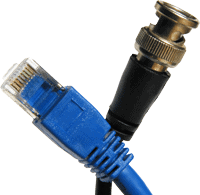Copper Internet in the USA
Providers Offering Copper Service
We've found 196 providers offering Copper service in the US. Below are stats on their coverage and speeds.
Copper Internet In the United States
While DSL and Cable are technically transmitted over cables made from copper, our definition of copper broadband is limited to the other technologies that use copper cables. This includes traditional T-carrier lines like T1 and T3, as well as new technologies like Ethernet over copper (EoC). T1’s are usually used for multi-channel voice lines, but they can also be used for dedicated symmetrical broadband. They don’t necessarily have to connect to the internet; they can also be used as a private point-to-point network connection over any distance.
These copper connections are typically not a ready-connect type of service. They can take weeks or months to setup depending on the infrastructure already in place. The upside is that they can be used in cases where other broadband options are not available. However the cost is usually quite high. That’s why it’s rare that any of these technologies are used for a home broadband connection. It’s usually larger businesses that can justify the cost of these services.
If you are in the market for an alternative copper based internet connection for your business or home, we’ve compiled a full list of providers offering copper based technologies in the United States to help make finding the right one easier.
Should You Get T1/T3 Internet Service?
If typical internet service via fiber, DSL, and copper are not available to you, or you need a more robust business-class service, then you should look into the availability of T1 and T3 lines.
Benefits
Business Class Service
T-carriers and EoC are dedicated connections to your desired endpoint or back to the service provider’s internet backbone connection. Cable, DSL, and even fiber broadband is distributed through shared networks. While a shared network may still provide full speeds at all times, this is usually not guaranteed. Whereas a business class service like T1 is guaranteed making more suitable for mission critical applications.
Alternative to Fiber
Since EoC can achieve speeds reaching 200 Mbps or more, Ethernet can be an alternative to fiber when existing telephone cables can be used to transmit EoC. Compared to the cost of installing fiber optic cables (from the provider all the way to your premises), EoC or T3 may be a cost-effective alternative.
Limitations
Speeds Can be Slow
Newer services like Ethernet can provide really good bandwidth per dollar, but traditional T1’s are slow by their very definition. T1 is defined as a 1.544 Mbps service, which was fast back in the day, but not anymore. T3 is much faster at 45 Mbps, but cost per month can be in the $1,000s.
Cost is High
Even the low bandwidth T1’s can cost 10x as much as a home DSL connection. Costs are based on the type of service needed and the distance from the provider to the service location (the local loop).
How it Works

T-carrier was developed to carry multiple voice channels over a single twisted copper pair (telephone cable) to increase the capacity of existing infrastructure. It is a digital transmission technology that can also be used for data. A T1 line can carry 24-channels of voice simultaneously or 1.544 Mbps of data or any combination of. Since signals can degrade quickly over copper wires, repeaters must be placed every 5,000 feet or so.
Ethernet over copper uses the same ethernet protocol as we use to connect computers and local area networks, but instead of Cat5 ethernet cables, it uses multiple pairs of existing phone wires for transmission. This is an example of squeezing more out of older existing infrastructure.
Largest Copper Providers
-
Monmouth Telephone & Telegraph
2.87% Coverage
-
Verizon Business
2.24% Coverage
-
Claro Internet
0.90% Coverage
-
TPx Communications
0.61% Coverage
-
US Signal Company
0.56% Coverage
-
NUVISIONS
0.53% Coverage
-
Astound Broadband Powered by RCN
0.49% Coverage
Are you a journalist or researcher writing about this topic?
Contact us and we'll connect you with a broadband market expert on our team who can provide insights and data to support your work.
